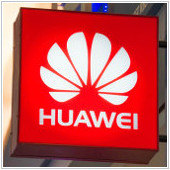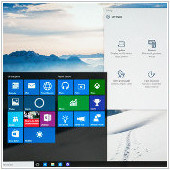In a bombshell announcement for the non-Apple gadget geeks, reports are surfacing that Google plans to team up with Huawei to build its next Nexus Android tablet. Up until last year, Huawei’s relationship with Google has been limited to manufacturing the Google Nexus 6P phone. But with these new reports, the industry is abuzz with […]
 In a bombshell announcement for the non-Apple gadget geeks, reports are surfacing that Google plans to team up with Huawei to build its next Nexus Android tablet. Up until last year, Huawei’s relationship with Google has been limited to manufacturing the Google Nexus 6P phone. But with these new reports, the industry is abuzz with the possibility of a refresh of one of Android’s best tablets. Let’s take a closer look.
People spend a lot of time looking for and comparing the best tablets on the market. Obviously, some prefer the iPad Pro 12.9 for its gigantic screen, but for those who just can't get enough of the customizations available for Android devices, a Google Nexus Android tablet is best.
In a bombshell announcement for the non-Apple gadget geeks, reports are surfacing that Google plans to team up with Huawei to build its next Nexus Android tablet. Up until last year, Huawei’s relationship with Google has been limited to manufacturing the Google Nexus 6P phone. But with these new reports, the industry is abuzz with the possibility of a refresh of one of Android’s best tablets. Let’s take a closer look.
People spend a lot of time looking for and comparing the best tablets on the market. Obviously, some prefer the iPad Pro 12.9 for its gigantic screen, but for those who just can't get enough of the customizations available for Android devices, a Google Nexus Android tablet is best.
But whether Google retains the ‘Nexus’ name remains to be seen. On October 4, the tech giant will host an event to release devices in their new ‘Pixel’ line and may add a Huawei tablet to this family. With its rumored 4GB of RAM and top-of-the-line specifications, the new device from Google and Huawei will enable users to enjoy an experience on par with that of a full-fledged desktop computer -- all while stripping the out-of-the-box model of any unnecessary manufacturer software and bloatware.
In 2015, Huawei manufactured Google’s Nexus 6P smartphone, which was lauded as "the most premium Nexus ever." That fact, combined with Huawei’s existing tablet prowess from its experiences with the MediaPad M3, make this an all-star team-up.
Although we only know a handful of specifics about this new tablet, we do know that we love the Huawei/Google smartphone collaboration and can expect good things. Being a leader in the industry means constantly keeping your ear to the ground for new and exciting releases. You can trust us to always be one step ahead of the competition with our insider knowledge. For all your Android and mobile device questions, we’re the authority. Get in touch with us today.

 For the average business owner, a virtualized network may not seem groundbreaking. And until recently, even the team at VMware didn’t realize just what they could do with it. Now that they’ve publicly announced what they’re calling “Project Goldilocks,” we finally see how relevant it is. Every small- or medium-sized business is concerned with endpoint security, and that’s why you absolutely must read on to learn about this new form of virtualization.
For the average business owner, a virtualized network may not seem groundbreaking. And until recently, even the team at VMware didn’t realize just what they could do with it. Now that they’ve publicly announced what they’re calling “Project Goldilocks,” we finally see how relevant it is. Every small- or medium-sized business is concerned with endpoint security, and that’s why you absolutely must read on to learn about this new form of virtualization. Regardless of the app, platform, or operating system, digital notifications are a tricky business. Our devices are overcrowded with software of varying importance, and without proper customization the stream of information can become overwhelming. Thankfully, Windows 10’s action center is built atop a solid foundation -- it just needs a bit of help. If Windows notifications are driving you up a wall, try out the three steps we’ve listed here to get them under your thumb.
Regardless of the app, platform, or operating system, digital notifications are a tricky business. Our devices are overcrowded with software of varying importance, and without proper customization the stream of information can become overwhelming. Thankfully, Windows 10’s action center is built atop a solid foundation -- it just needs a bit of help. If Windows notifications are driving you up a wall, try out the three steps we’ve listed here to get them under your thumb.
 It’s undeniable that we hide skeletons in our closets, your search engine history included. Users might not know this, but Google keeps a full record on EVERY search you have ever made, removed searches as well. If you thought you deleted all your secret searches, think again. Luckily there are things you can do to prohibit Google from collecting more data, ensuring that your most private, My Little Pony-related inquiries aren’t ever brought to light.
It’s undeniable that we hide skeletons in our closets, your search engine history included. Users might not know this, but Google keeps a full record on EVERY search you have ever made, removed searches as well. If you thought you deleted all your secret searches, think again. Luckily there are things you can do to prohibit Google from collecting more data, ensuring that your most private, My Little Pony-related inquiries aren’t ever brought to light.